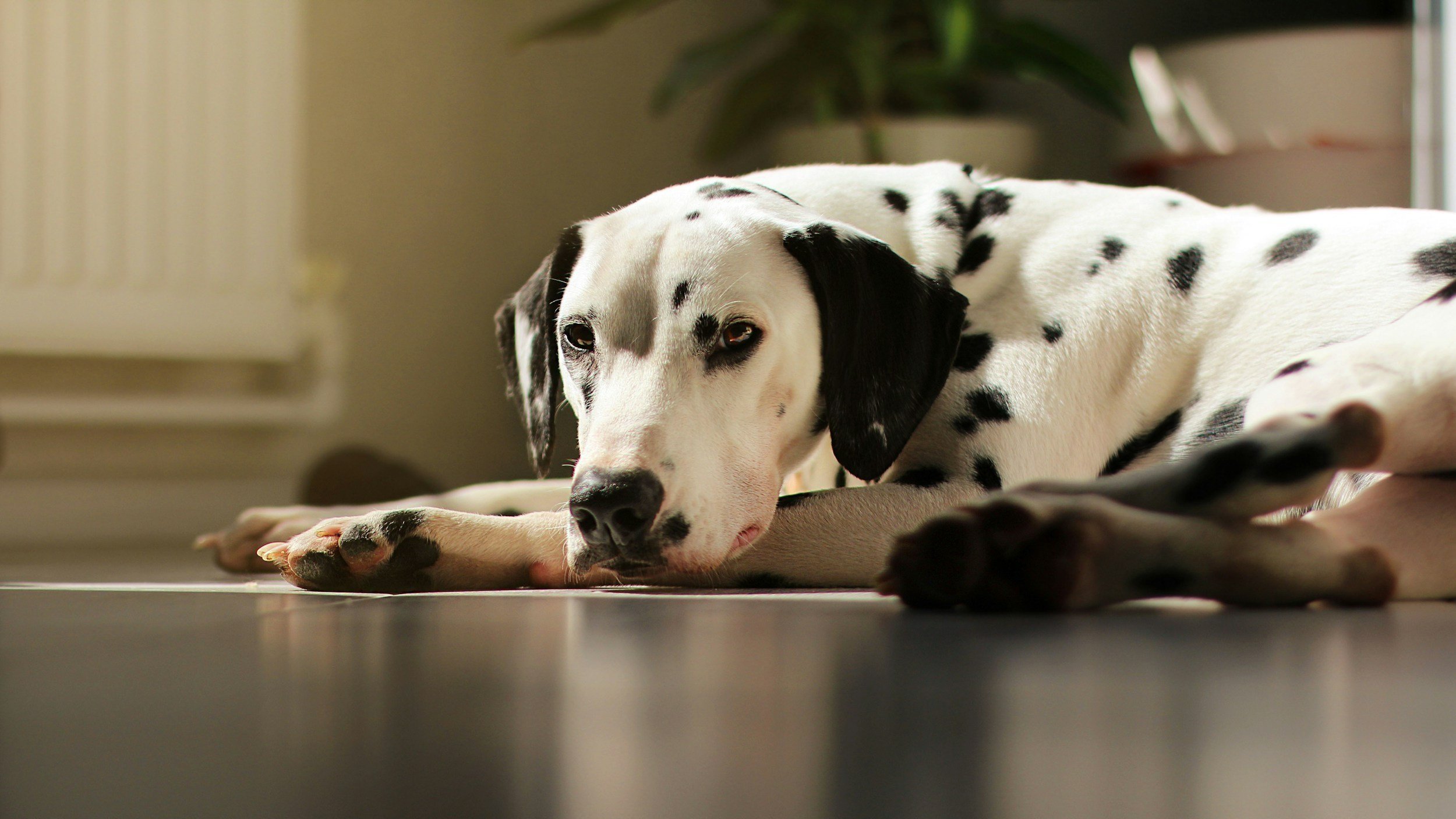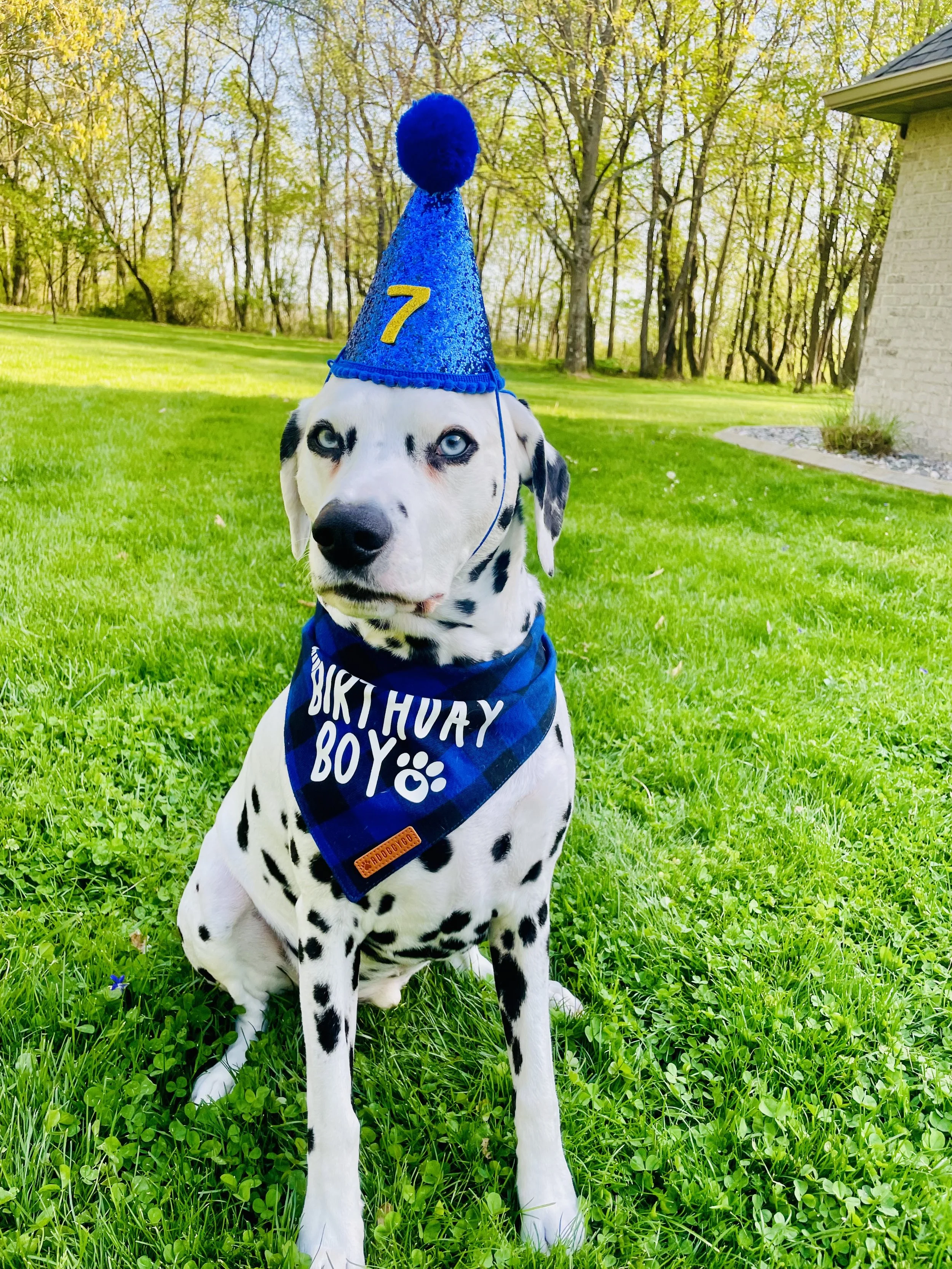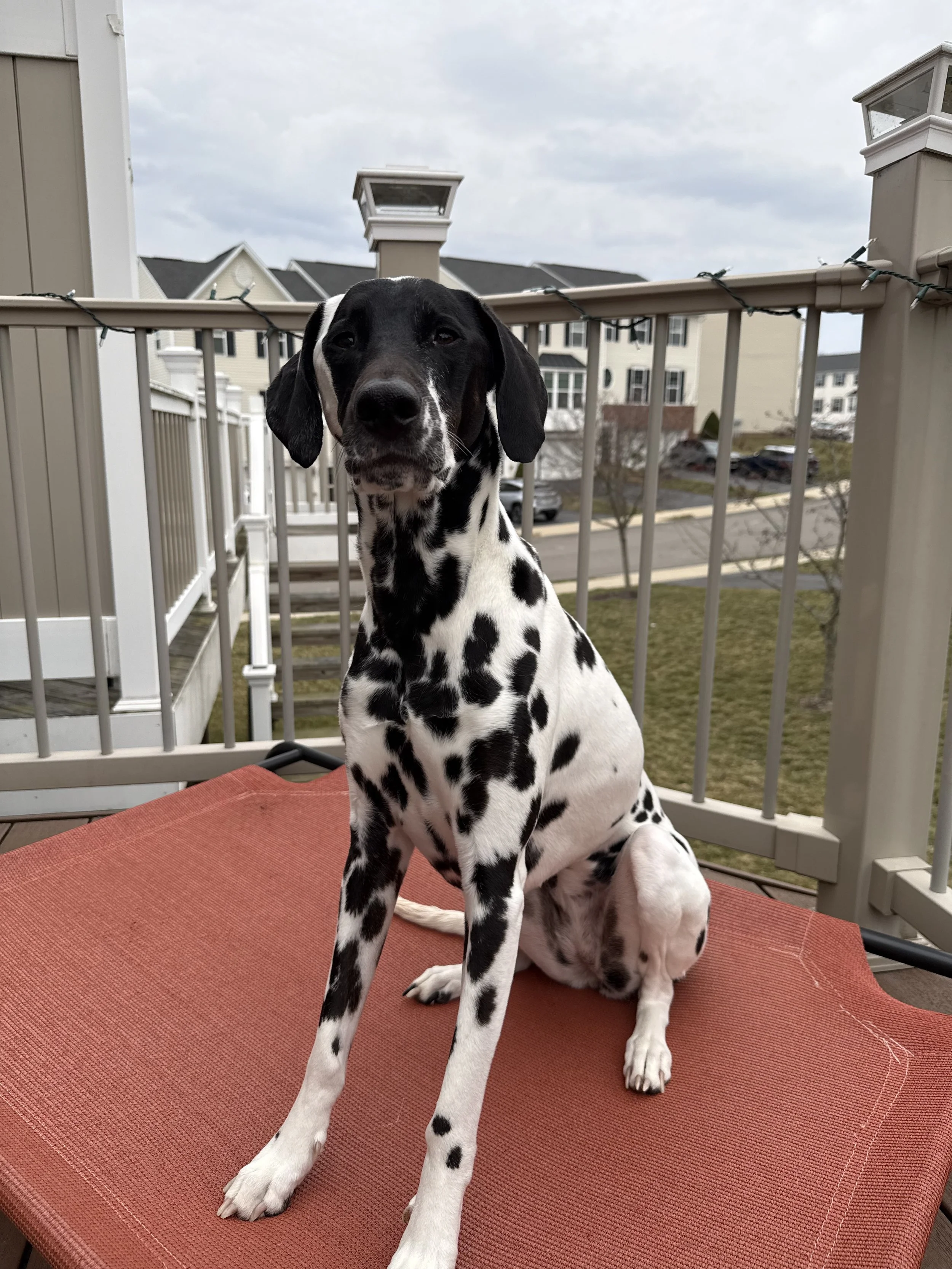Hyperuricosuria in Dogs (HUA)
After having a massive influx of HUA Dalmatians for Nutrition Counseling in recent months, they now make up more than 40% of my current client list. I quickly became fascinated with the HUU gene (Hyperuricosuria often referred to as HUA for High Uric Acid). What I found and was told by many clients, is that there is a severe lack of reliable HUA information available to pet owners. Much of what I found was also plagued with speculation and rather extreme dietary advice for an animal that is still predominantly carnivorous selective, and their entire physiological makeup still influences them to thrive on a meat based, fresh food diet. It is true they require a specific, low-purine diet, but this can be achieved while still honoring their biological needs for fresh, meat based foods. What I found throughout my 9+ years of Nutrition Counseling and creating balanced, whole food Disease Management Diets and Food Therapy Diets, consulting and learning from a variety of conventional, holistic and integrative vets; is that all living beings thrive on food in it’s whole food form, as minimally processed as possible. This is not only natural for all living beings, it is the most nutritionally dense and bioavailable form of both macro and micro nutrients. Dogs are not all the same, diet is very specific to each dog and with diets formulated specifically for your pet (like I offer, I have yet to offer a repeat recipe in 8 years), we can tailor it to the individual needs of each pet and family. This allows us to monitor and adjust the purine amount in each recipe to ensure it’s suitable for a dog with hyperuricosuria and the potential renal acid load in each ingredient. Thus, I created ‘The Dal Hub’, currently this is a series of videos and graphics with helpful tips and information applicable to every type of feeder, and a free monthly newsletter where I do a deep dive on various Dalmatian related topics so that both LUA & HUA owners can benefit, but it does have a heavy HUA focus. If you own a Dalmatian and are not signed up for The Dal Hub, I highly suggest you do so here: Click Here.
Below you will find one of those newsletters on HUA. I aim to offer a fresh perspective on this life long condition and my sincere hope is that these resources provided in The Dal Hub, help pet owners better support and aid their pets on their health journeys…
The Urinary System
Bladder health is important, but there are other organs to support…
Often when we are discussing the health of HUA Dalmatians, we are talking about bladder health. After All, it is the basis of many of the issues pets with Hyperuricosuria experience. However, everything within the body is connected. The body is made up of many intricate systems to support daily life, and each one is connected to the other. When one fails, the others will follow sooner or later. In order to understand why HUA pets have abnormally high uric acid concentrations in their urine, and how best to support them, we need to understand how the Urinary System operates.
Purines are a dirty word in the HUA world, something that needs to be avoided. Purines are not only consumed through food, they are also produced by the body. The truth is, Purines are some of the most common organic compounds on the planet. They have a variety of functions in the body including; Forming DNA & RNA, Providing energy, Controlling cell growth, they help the nervous system function, and play a part in brain development. They are unavoidable and essential for bodily functions. Unfortunately, Hyperuricosuria, an autosomal recessive trait common among Dalmatians, Bulldogs and Black Russian Terriers causes high amounts of purines to accumulate in the body. Purines both consumed and created by the body make a waste product called Uric Acid. Waste products must be removed from the body or they build-up and create toxicity. The kidneys are responsible for converting Uric Acid into Allantoin using an enzyme called uricase and then excreting it. This mutated gene technically known as HUU but often referred to as HUA, inhibits the kidneys ability to convert this waste product. Therefore pets with hyperuricosuria have an excessive amount of uric acid, more than 4 times the amount of LUA pets. This increased Uric Acid load causes HUA pets to have a lower than normal urine PH. The ideal urine PH range for LUA pets is between a 6-6.5, although because of conventional carbohydrate heavy diets, many LUA pets are between a 7.0-7.5. Pets with Hyperuricosuria tend to be too acidic, and when the diet isn’t monitored they will often run below a 6. This puts them at risk for crystals and in turn, stone formation. Alkaline PHs 7.5 and above are the perfect environment for bacteria growth. Due to the risk associated with more acidic PHs for HUA pets, keeping them in a 7.1-7.5 range is better, ideally 7.1-7.4.
There is a common myth that HUA pets will always have crystals present in their bladder, this is not true. Crystals form from the PH being too acidic for extended periods. Which can occur from inflammation in the body, and an acidifying diet. With proper diet and support for the entire Urinary System (Kidneys, Ureters, Bladder, Urethra) and the liver (not technically part of the urinary system, but directly related), in many cases we can manipulate the body and manage this trait. Unfortunately, there is a hole in the market for HUA friendly prepackaged foods, even prescription UD kibble isn’t wholly effective (Below I will provide two Urinalysis examples). The number one concern with managing HUA is lowering inflammation in the body, keeping it hydrated, and not overwhelming it with high levels of purines. Dry, highly processed kibbles are inflammatory in nature due to the quality of ingredients permitted in conventional pet feed, storage and the high heat processing. Both the storage of ingredients prior to processing and the storage of kibble exposes the food to toxins (various mycotoxins, and pesticides) and the light and air exposure after production, when the bag is sitting in your closet or storage container for weeks - causes already rendered fats to oxidize and go rancid quickly. All of these things contribute to the inflammation in the body. The body focuses it’s resources (immune response), on combating inflammation, a losing battle when the primary source of energy for the body is causing the inflammation. The immune system is also responsible for responding to increased uric acid production, and a variety of other things like fighting harmful bacteria, and combating disease. One of the primary reasons I also do not recommend raw diets for HUA Dalmatians, they are more susceptible to bacteria that an otherwise healthy pet can neutralize. The body does not have endless resources, when the immune system is overwhelmed it is not able to do any of its functions optimally. When too much Uric Acid accumulates in the body, it can alter kidney cells making them profibrotic (increased scar tissue), this can change the way the kidneys operate, and reduce blood supply. Ultimately further impairing it’s function.
Another common misconception about HUA pets is that they should be fed a vegetarian diet to limit purine consumption. HUA dogs are still canines, their physiology and the known lesser digestibility of plant protein for dogs still dictates a meat based diet. They lack the appropriate amounts of amylase to digest the amount of carbohydrates in conventional and vegetarian diets. High amounts of these starchier ingredients also increases inflammation and puts them at risk for a host of other health conditions down the road. They are also still living, breathing beings and the quality of their diet will dictate their health now or later. The idea that they should be fed vegetarian diets comes from the lack of viable premade options on the market, this is in an attempt to limit the amount of purines consumed. However, we can monitor the amount of purines being fed while still feeding a biologically appropriate diet for a dog. When I formulate recipes for HUA Dalmatians we choose cuts and varieties of meats that are lower in purines, opt for naturally derived supplements instead of relying on purine concentrated organ meats in their base diet (as we would for LUA pets), and use negative PRAL (Potential Renal Acid Load) produce. Different varieties of foods will have positive PRAL values, meaning that the kidneys will be unable to turn the uric acid into Allantoin and it will create acidity. Negative PRAL values tell us that urates derived from those foods will simply be urinated right back out instead of accumulating. Each recipe is thoughtfully formulated to match the specific needs of each pet, no two diets look alike. We also teach you how to responsibly test and monitor your pets health and work cohesively with your vet to do so, and how to monitor in between visits from home. So it is true that HUA pets will require more plant material than LUA pets and that their diets should look different, but it is still important that we provide HUA pets with species appropriate forms of energy to avoid increased inflammation and promote optimal nutrient absorption.
I could go on and on about this and all the affected systems in the body, but in the interest of simplicity I will finish this weeks newsletter off with some recent client results from prescription UD diets, and tips on supporting the organs of your HUA and LUA pets. Below there is an image of Hills UD prescription diet ingredients, and then following it are the results of two dogs who began eating this food to improve an acidic urine PH (HUA Dal), and a dog given this food to lower the PH which was far too alkaline. The first results are the reason for the diet change, the second results were taken to assess the impact the food had made (what you will find is it had the opposite result in both cases). In some cases I am sure this food has helped, but not in any I have yet to witness, it is not a cure-all, one-size fits all diet. My primary goal with The Dal Hub, is to offer a different perspective and provide resources for the community in hopes that it helps many of you. At the end of the day, YOU are your pets biggest advocate and must decide what is best for them and you. I will be their SECOND. I have all of the respect in the world for all that you do for them on a daily basis, regardless of what feeding modality you choose - I am happy you are here, and I am awed by EVERYTHING you do to care for your pets!
Low Quality, highly rendered, carb based ingredients. Followed by a host of proinflammatory synthetic supplements. Not one whole-food biologically appropriate ingredient.
Ways every HUA owner can support their pets health… add fresh alkalizing negative PRAL produce that is also low in purines (it’s not the same thing). Feed as fresh as possible, human-grade food. Avoid excessive amounts of carbohydrates - if your dog is on kibble, canned or carb dense dehydrated diets (exp. Honest Kitchen) or carb dense gently cooked diets (exp. Just Food for Dogs), do not add carb dense treats, focus on fresh alkalizing foods. Avoid Cranberry. Use Easy Peesy Protocol from Adored Beast Apothecary 2-3 yearly. Support your dogs microbiome quarterly with HIGHLY QUALITY, species specific probiotics, don’t use probiotics indefinitely. LUA pets, support the microbiome quarterly, include seasonally available produce, include fresh meats, and fatty fish no more than 3 times per week, increase high quality meat amount and include a cranberry supplement if PH is above a 7.2.
A few of our awesome Dalmatian clients!
REMEMBER that HUA is a serious health condition that requires close monitoring with your veterinarian. This blog post is for informational purposes only. If you suspect your pet has a health condition, you need to consult a vet. We require full medical records for HUA nutrition counseling clients.
Written by
Autumn B Somers
Certified Canine & Feline Nutritionist
A Balanced Canine


















